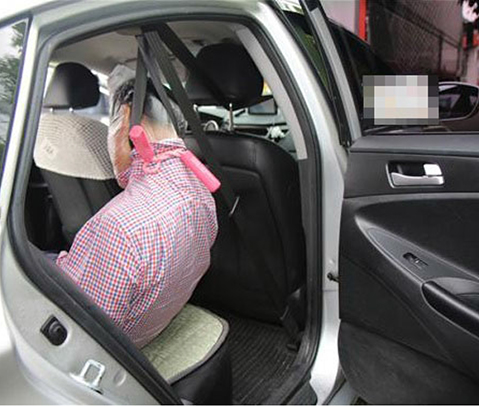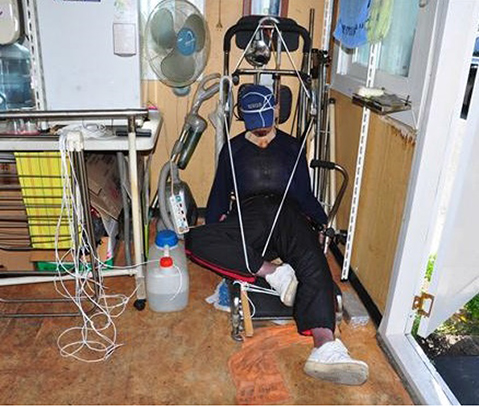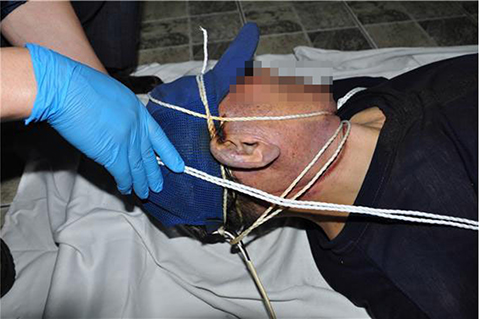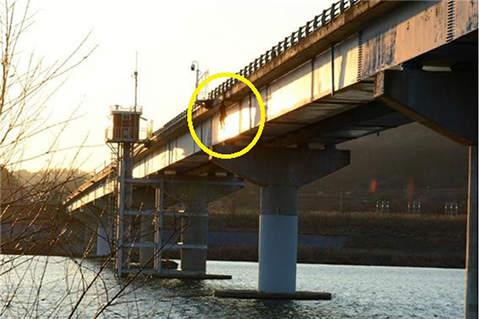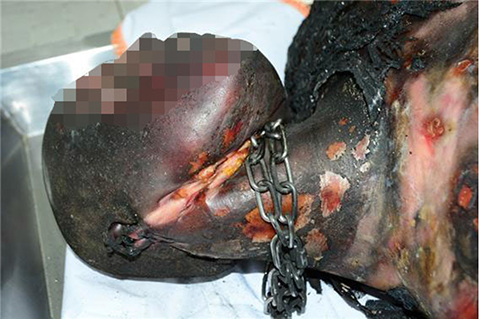Korean J Leg Med.
2019 Nov;43(4):159-163. 10.7580/kjlm.2019.43.4.159.
Three Cases of Planned Complex Suicide
- Affiliations
-
- 1Investigation Department, Gyeongbuk Provincial Police Agency, Andong, Korea.
- 2Department of Forensic Medicine, School of Medicine, Kyungpook National University, Daegu, Korea. sanghan1@knu.ac.kr
- KMID: 2464494
- DOI: http://doi.org/10.7580/kjlm.2019.43.4.159
Abstract
- Complex suicide refers to a type of suicide that leads to death using two or more methods. We report three cases of unique and rare examples of complex suicide, with the plan of the second and/or third method working simultaneously if the first suicidal attempt had failed. In the first case, the victim used three methods of asphyxia: hanging by a safety belt, plastic bag suffocation, and self-ligature strangulation by stretching rubber bands within the vehicle. In the second case, the victim hanged himself with electrocution by attaching electrical leads to the right side of his head. In the third case, the victim with the intention of drowning jumped 20 m above the water surface on the bridge by tying metal chains to the bridge rail and self-immolation by gasoline. Planned complex suicide involves more successful methods to commit suicide and may conversely be camouflaged as suicide in murder case.
Keyword
MeSH Terms
Figure
Reference
-
1. Toro K, Pollak S. Complex suicide versus complicated suicide. Forensic Sci Int. 2009; 184:6–9.2. Germerott T, Jaenisch S, Hatch G, et al. Planned complex suicide: self-strangulation and plaster ingestion. Forensic Sci Int. 2010; 202:e35–e37.3. Banchini A, Schirripa ML, Anzillotti L, et al. Planned and unplanned complex suicides: casuistry of the Institute of Legal Medicine of Parma (Italy). Leg Med (Tokyo). 2017; 29:62–67.4. Kim DY, Lee S. Self-ligature strangulation by utilizing recliner. Korean J Leg Med. 2019; 43:111–114.5. Straka L, Novomesky F, Stuller F, et al. A planned complex suicide by gunshot and vehicular crash. Forensic Sci Int. 2013; 228:e50–e53.6. Pelissier-Alicot AL, Gavaudan G, Bartoli C, et al. Planned complex suicide: an unusual case. J Forensic Sci. 2008; 53:968–970.7. Barranco R, Diana C, Ventura F. Forensic pathological study of complex and complicated suicides: a twelve-year case series in Genoa (Italy). J Forensic Leg Med. 2019; 65:5–8.8. Alunni V, Grevin G, Buchet L, et al. An amazing case of fatal self-immolation. Forensic Sci Int. 2014; 244:e30–e33.9. Sauvageau A, Boghossian E. Classification of asphyxia: the need for standardization. J Forensic Sci. 2010; 55:1259–1267.10. Christin E, Hiquet J, Fougas J, et al. A planned complex suicide by self-stabbing and vehicular crash: an original case and review of the literature. Forensic Sci Int. 2018; 285:e13–e16.
- Full Text Links
- Actions
-
Cited
- CITED
-
- Close
- Share
- Similar articles
-
- Medical policy for suicide prevention
- Characteristic Risk Factors Associated with Planned versus Impulsive Suicide Attempters
- A Study on the Relationship among Obesity, Suicide Plans, and Suicide Attempts: The 2018 Korea National Health and Nutrition Examination Survey
- The Interpretation of Suicide by Gender in Late Joseon Dynasty: around cases of suicide in 'Trial Document'
- Comparison of Suicide Attempt by Generation During the COVID-19 Pandemic: Focusing on the Younger Generation

